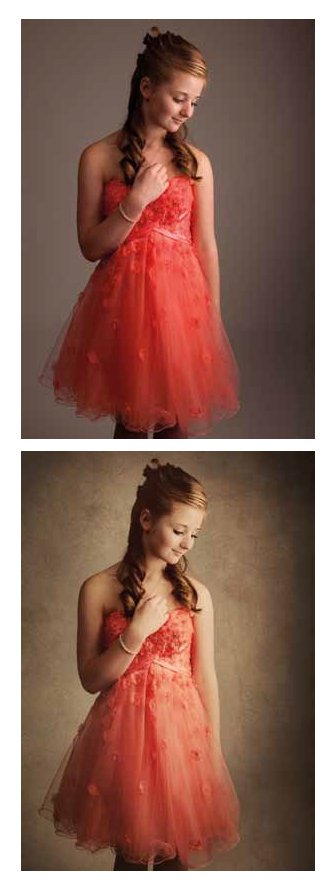articles/Photoshop/retouchornottoretouch-page1
To Retouch or Not to Retouch - part 1 of 1 2 3 4 5
by Christina Lauder Published 06/06/2012

Christina Lauder asks a perennial question and solves another by applying the retouch to herself
That is the question asked by so many photographers. And if you decide to retouch, how far do you go?* Many years ago, as I cultivated a hobby through the use of my university's photography club, I felt that the introduction of digital photography and digital manipulation meant a distinction between digital and the pure form of photography was required. Surely you couldn't compare images manipulated on a computer with those created in a darkroom and lump them into the same competition category.
But then, as I dodged and burned, used a magenta filter to increase contrast, used a diffuser to soften the image, and then finished with a chemical to tone the image, it dawned on me. Photography has been manipulated since the very beginning of photography, hence the tools we see today in software such as Photoshop. We can add contrast like we did back then using filters in an enlarger.
We can burn to darken selections on our images and we can dodge to brighten. And for those highly skilled printers the same cutting and pasting we do today in Photoshop was being done over a century ago, as the talented Mr Yerbury would attest to, as it is something his own great-grandfather did way back when.
Retouching and enhancing images is nothing new, nor is it unique to the digital world. We just have different tools and a method that makes it more accessible to the masses. I personally prefer the use of a computer to a darkroom. There were days back then when I didn't see daylight. I didn't mind at the time as it was an exciting hobby, but to be employed to miss out on daylight on a regular basis would have left me feeling very low I am sure. Instead I'd rather sit at my desk, as I am now, plugging away in front of a large screen, looking out into a garden in full bloom.
So do I retouch or enhance my images? Absolutely yes. Why do I retouch? Because I feel that very few images have the punch or the perfection that I am after, straight out of camera. This could mean doing as little as adding a slight bit of contrast. Or as much as fine tuning every inch of a portrait or landscape. My aim in my portraits is to produce images that resemble the picture that an individual carries around of themselves in their head, not the image they are often shocked by when they see themselves in pictures.
Many of us know that when we see ourselves in pictures or videos we often think 'am I really that heavy, do I really have that many wrinkles, do I really look that tired?' Like the saying goes, a camera adds 10 pounds. And it is those questions and that fact that I want to remove for my clients when they see the portraits I've produced for them. At the same time though, a client shouldn't look at an image of themselves and think 'bloody hell, she must have done some work to make me look like that'. Nor should they think that the image looks like a different person.
I don't want my clients thinking I've worked on their images much at all really, just that I've done a good job to produce flattering images. While trying to come up with content for this article I struggled with the idea of asking a client to be my before and after example.
How could I ask anyone else to appear as before and after example in a national magazine? Then it hit me. I will be the before and after, as much as it pains me.
You are currently on page 1
- To Retouch or Not to Retouch page 1
- To Retouch or Not to Retouch page 2
- To Retouch or Not to Retouch page 3
- To Retouch or Not to Retouch page 4
- To Retouch or Not to Retouch page 5
1st Published 06/06/2012
last update 09/12/2022 14:58:34
More Photoshop Articles
There are 0 days to get ready for The Society of Photographers Convention and Trade Show at The Novotel London West, Hammersmith ...
which starts on Wednesday 15th January 2025





